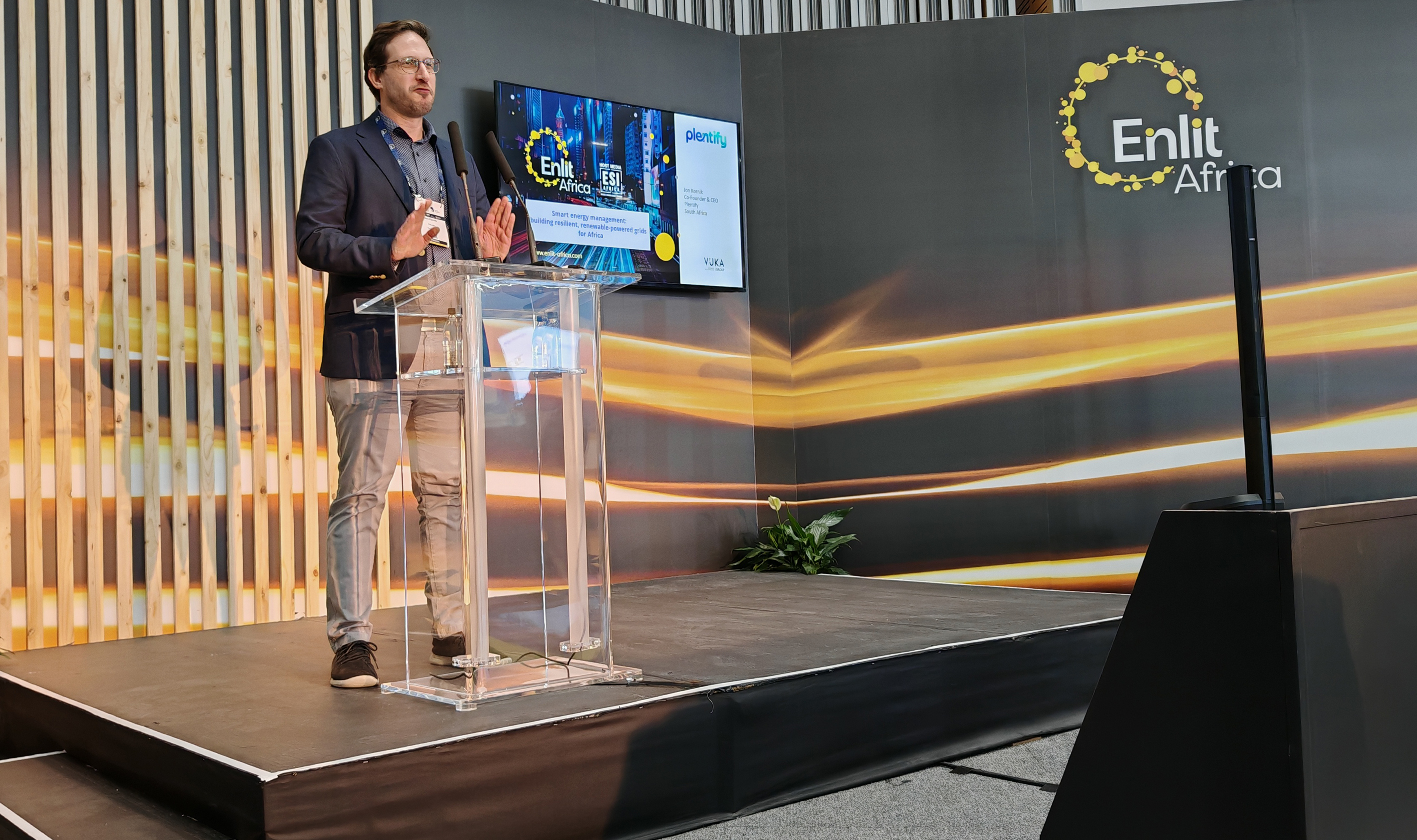When Eskom gets its act together, what happens to a renewables market that’s become addicted to panic? You pivot to new projects or find different avenues to distribute your energy efficient products.
For one company, Plentify, Enlit Africa 2025 was a resurrection of sorts. The home energy startup, once on the cusp of a residential solar revolution, found its breakout moment slipping away when the blackouts backed off.
CEO Jon Kornik has always been candid about the fickle nature of their market: “Sustained level four plus load shedding for months on end” is what it takes to really get South African households to adopt their tech.
But Enlit brought news of a partnership with Conlog, a stalwart in smart metering with reach across 58 countries. The companies are teaming up to roll out Plentify’s intelligent geyser and solar management tools – HotBot and SolarBot – to millions of households. It’s a strategic pivot from panic-powered purchases to long-term infrastructure plays.
“Millions of South African homeowners could soon save more, have more control and backup power from the infrastructure already in their homes,” Kornik says.
Read more: Eskom bets big on renewables with new ‘green’ subsidiary
The maths checks out: Project Smart Geyser trials showed R300-plus in average monthly electricity savings per home, and modelling suggests that rolling HotBot out to just 25% of households could shave 20 hours of rolling blackouts off the national calendar each month.
Utility scale distribution
/file/dailymaverick/wp-content/uploads/2025/06/IMG_20250520_164518.jpg)
Conlog CEO Logan Moodley on the other hand positioned the partnership as part of a broader evolution.
“Our strategic vision with this project is fundamentally about evolving towards being more consumer-centric in the adoption of smart metering. We aim to understand and address the impact of energy access on consumers.”
The timing couldn’t be more critical. With Conlog’s role as a key supplier for smart prepaid electricity meters via the RT29 tender withthe National Treasury, the partnership streamlines municipal procurement processes.
As Moodley noted: “Our goal is to minimise consumer frustration, ensuring that even during load management activities, consumers maintain access to essential services without inconvenience.”
While residential solar stumbles, industrial demand tells a different story. Actom, with more than 120 years of experience in engineering and construction, has identified a new frontier: data centres.
“Data centres, particularly with the rise of AI and cloud workloads, have become totally energy hungry,” Sy Gourrah, senior general manager of Actom’s smart technology division, tells Daily Maverick.
The municipal problem
Gourrah tells how Actom spotted the opportunity to deliver local solutions to power-hungry hyperscalers that have 10x their server rack demands with the advent of AI – some loads even touching 100kW.
“You need proper substations, batteries, diesel, solar – all of it,” she says. “The grid has almost become a backup.”
It’s not just load shedding fatigue driving this hybrid-energy trend. It’s a practical necessity for servers constantly chasing uptime. Actom’s play? Locally built, ruggedised infrastructure for Africa’s climate, modular substations and even project financing if you can’t foot the bill upfront.
But all this extra load is stretching municipal resources thin as they and the national utility scramble to make sure the network can meet demands.
Kornik, however, isn’t sympathetic. “The trend of incentives is worrying,” he told a small breakout crowd at the conference. “The government seems to be trying to do what they can to disincentivise solar.” He rattled off examples: import duties, tariff changes, the loss of tax breaks. And then he said the quiet part out loud.
“There seems like there might be a philosophical problem of seeing solar as a threat as opposed to an opportunity that is going to reshape South Africa and position us competitively in a market which actually cares about the carbon content of your goods.”
Going down in a death spiral
His words landed heavy. The idea that our own government sees citizen-led solar as a danger, not a delight, is the kind of take you can’t walk back with a press release.
Kornik warns of a “utility death spiral”: as more people defect to solar, utilities raise tariffs to serve those who remain, pushing even more to defect. Municipalities, instead of innovating, resist – and lose their best customers.
“There are more progressive municipalities… having really good success in forming partnerships,” he said. “And others that aren’t even ready to talk.”
In the shadow of Eskom’s temporary competence, the players with long-term bets and deep distribution are the ones who might just rewrite the script. But if the municipalities don’t get their act together, they may find themselves cast as the villain in an energy transition that’s happening with or without them. DM




 Jon Kornik, CEO of Plentify, addresses a small crowd at the Enlit Africa conference in Cape Town. (Photo: Supplied)
Jon Kornik, CEO of Plentify, addresses a small crowd at the Enlit Africa conference in Cape Town. (Photo: Supplied)